Let Us Re-Engineer Your Contracts
We could not say enough good things about our relationship with ShipSigma. Beyond the initial savings, they continue to find us new angles for savings, set up dashboards specific to our needs, and meet with us quarterly to go through reporting/review savings/new opportunities. ShipSigma has been more than just a service for us, they have been a continuous partner as we navigate the difficulties of controlling our freight costs and holding the vendors accountable.
Tyler B. Vice President of Finance, Leading Global Manufacturer
4 hours. It took less than 4 hours of my time for my company to see half a million in annual savings. No headaches, no feet-dragging negotiations, no confusing documents. It was so easy.
Todd M. Vice President, Food Manufacturer and Distributor
The insights and analytics, ShipSigma provided before and after negotiating our carrier agreements, make it clear we have a long-term partner who is aligned with our company values. The cost modeling and rate simulation let us know the exact savings we would see, down to the last cent. After running our historical data, ShipSigma was able to find us almost 28% in annual shipping savings with our same carrier.
Jonica H. Controller, Market Leading Wine Distributor
Our team managed billions of dollars of various category spend. To have ShipSigma guarantee a savings and then fully execute so that we’re realizing increased EBITDA within 60 days allows us to focus on other strategic opportunities.
Randy H. Chief Procurement Officer, Leading Provider of Pork Products
We thought we had the best rates. We were told we had the best rates. ShipSigma got us better rates. They found us nearly 25% in savings and helped us renegotiate our contract with our carrier. It was just so easy.
Brad M. Chief Operations Officer, Clothing Retailer
The parcel invoice audit was a lifesaver for us. The team at ShipSigma monitored the weekly audit and noticed that instead of shipping air, over 60% of our packages could have traveled ground with no delay in arrival. They saved us more money than we had ever saved in our manual audit process.
Julie F. Chief Financial Officer, Industry Leading Retailer
Our Contract Negotiation Services
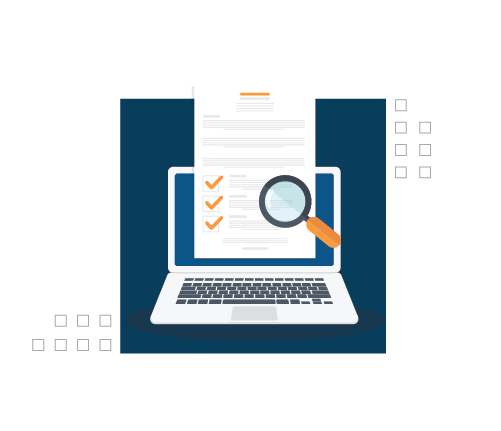

Contract Analysis
We'll run a cost model analysis and what-if simulations using your historical shipping data to provide a Shipping Savings Guarantee


Contract Engineering
Our customized carrier network strategy is executed with white glove service to ensure optimal savings while strengthening your carrier relationship


Contract Compliance
We'll verify contract implementation through discount and tier management, surcharge mitigation, parcel savings analytics and more
Know Your Savings Before You Negotiate
Using our industry-leading cost modeling software, we’ll let you know what you should be paying, down to the penny.
Carrier Contract Negotiations
Are you wondering how to negotiate shipping rates with UPS or Fedex? Unsure what a carrier contract is exactly? Here at ShipSigma, we are dedicated to transparency in an aspect of business that can be quite murky and difficult to navigate. If you are unclear on aspects of carrier contract negotiations or are looking to save money on shipping parcels and freight, you’re in the right place.
This guide will cover:
- What is a carrier contract?
- What is the difference between parcel and freight?
- What does contract negotiation mean?
- What is parcel negotiation and what is freight negotiation?
- Why is contract negotiation important?
- What is a good parcel shipping rate?
- What is a good freight rate?
- How do you negotiate a contract?
- How do you negotiate with shipping companies?
What Is a Carrier Contract?
A carrier contract is an agreement between a company that ships parcels or freight and a company that has packages to ship. Shipping companies, also known as carriers, charge a set rate for every parcel that they move. An example of a contract carrier is UPS with another popular options being FedEx. Companies that frequently ship large quantities of parcels or freight are able to negotiate lower prices with contract carriers. This is where the "contract" part comes into play, as this agreement spells out all the details of what each party is responsible for.
A carrier contract will typically include:
- Contact and billing information - a standard part of every contract.
- Scope of work - this may include the anticipated quantity and frequency of parcels needing to be shipped.
- Term - the length of the contract, i.e. how long the contract carrier will deliver parcels under the terms of this contract.
- Rates - one of the most important aspects of the contract and one that can be fairly opaque as companies may not have any way to gauge what a "good" rate is.
- Payment terms - net 30 day payment terms are fairly standard, but some shipping companies may require weekly payments, or you may want to negotiate a different payment schedule.
- Cargo liability - indicates who is liable for payment should the cargo get damaged during shipment. May also include late delivery clauses.
- Insurance - spells out the responsibility for insurance for each party.
- Indemnification - this clause lays out the circumstances where the contract carrier is not responsible for certain issues or damages that may happen during the course of shipping.
- Confidentiality - contract carriers are notorious for secrecy, and these clauses can often scare companies into not seeking out information about their rates or shipping terms.
- Termination - this clause holds the terms under which the contract can be terminated.
Like all contracts, it is important to carefully read and review every clause before signing. Carefully reviewing the terms and conditions, and having a clear idea of what your business needs for this agreement to be beneficial, will help you negotiate a favorable contract with your carrier.
What Is the Difference Between Parcel and Freight?
Parcel generally refers to shipping individual boxes to many different locations. You may see "parcels" referred to as "packages," which is essentially the same thing. Parcel shipping generally has an individual package weight limit of around 150 pounds, although most packages are under 70. There is also usually a dimension requirement. Once your packages are over 108 inches by 165 inches, then small parcel shipping companies will categorize them as freight.

Freight refers to large quantities of boxes or goods that move as a unit to the same location. They are often on pallets and are categorized by the amount of space they take up in the shipping container. There can be full truckload, less than truckload (LTL), or partial truckload shipments of freight. Freight can be shipped via truck, cargo plane, ship, or train.
What Does Contract Negotiation Mean?
Carrier contract negotiation is the process of each party going through the contract and hammering out the details. Once these details have been mutually agreed upon, the carrier will draw up a contract that includes all of the terms and conditions. An important thing to note while parcel contracts tend to be similar to each other, there are many different types of freight contracts. These can include:
- Broker-carrier agreements that set out the date, delivery fees, payment terms, and liability and insurance information.
- Bill of lading, which is similar to a receipt, that is provided before the cargo is moved and functions as a proof of delivery. It specifies any special instructions, the timeline of the delivery, destination details, and a description of the cargo.
- Load tender, also known as the load confirmation, has the same logistical details and may include commission or brokerage fee structure information.
- Accessorial charges may be added with an additional receipt to include any services that exceed the scope set out in the original contract. This could include situations where waiting time occurs, shipments are refused, or other unusual circumstances.
- Rate confirmation may be included in the load tender or stand as an independent freight forwarder agreement. This contract spells out the rate to be paid to the carrier and must be signed by the carrier in order to be valid.
What Is Parcel Negotiation? What Is Freight Negotiation?
With parcel carrier contract negotiation, there are two main companies that most businesses use to ship their parcels: FedEx and UPS. This duopoly can make negotiating a contract tricky, since it’s difficult to figure out what a fair parcel shipping rate is (more on this later).
One of the unique factors with freight negotiation is the sheer number of carriers—all with their own fee structures and competencies. This overwhelming marketplace can lead to supply chain executives following the "path of least resistance," staying with the same providers they’ve used in the past despite rising prices and excessive fees.
At ShipSigma, whether you’re shipping parcel or freight, our industry-leading technology and best in class platform uses advanced data science and analytics to identify and recommend cost reduction opportunities. This enables a continuous improvement process to optimize parcel shipping spend. We also cost model out your shipping data to understand the profitability of the carriers to reverse engineer what your optimized contract should be and decipher how much money you will save.
For parcel shipping, we help you find small improvements that make a big difference—all without changing carriers or service levels and with no interruption to your workflow. You don’t have to change the way you ship to save money.
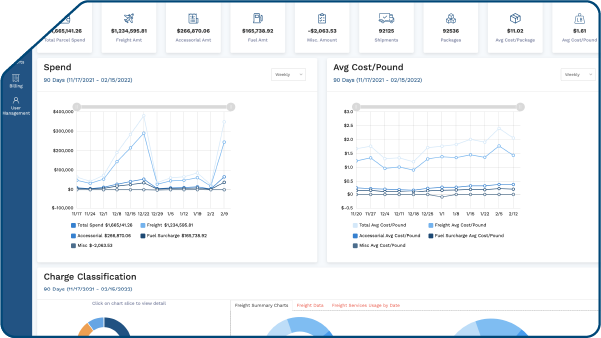
For freight shipping, we start with best-in-class vendors, thoroughly vet their capacity and performance, and structure mutually beneficial agreements. Our end-to-end service also includes on-going support, ensuring that your freight carriers adhere to the contract, as well as securing refunds and invoice corrections when they fail to do so.
Why Is Contract Negotiation Important?
Simply put: contract carriers want to maximize their profit margins, not help you maximize yours. Pre-negotiated shipping rates are sky-high, and often, your post-negotiation rates are not market appropriate either. Parcel carriers operate under a duopoly—meaning there are only two major carriers (FedEx and UPS) that control the rates for the industry.
Contract negotiation can have a powerful impact on your bottom line. For example, at ShipSigma, we worked with an industry-leading food and beverage company that was spending $7 million a year on shipping with UPS. Our proprietary platform, a Software-as-a-Service (SaaS) based analytics, contract analysis, and negotiation solution, saved them $2.4 million a year on their shipping costs… without changing carriers or service levels.
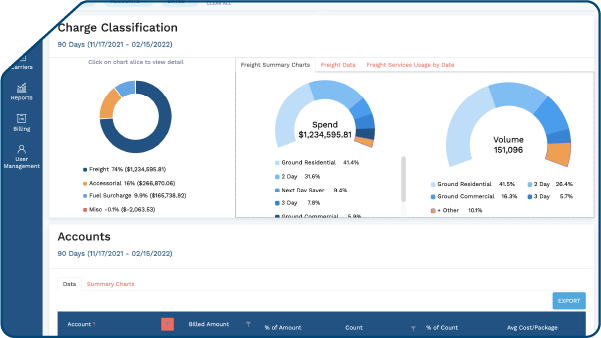
What are the 4 main stages of contract negotiations?
What are the 4 main stages of contract negotiations? Understanding these stages is critical for anyone involved in the logistics and supply chain industry, particularly those at the executive level aiming to streamline operations and improve cost-efficiency. At ShipSigma, we have refined this process to ensure optimal results for our clients.
Preparation
The first stage involves exhaustive preparation where your team must gather detailed knowledge about the current market conditions, historical shipping data, and an understanding of the carrier's capabilities and limitations. This stage sets the foundation for negotiation, making it essential to define clear objectives, understand the cost structures, and identify potential negotiation levers.
Discussion
In the discussion phase, initial contact and communications with the carrier are established. This is where the groundwork laid during the preparation stage comes into play. Your team presents their findings, outlines expectations, and begins to explore the possible adjustments in rates, service levels, and other contractual terms that could benefit both parties.
Proposing and Bargaining
This stage is where the actual negotiations occur. Proposals are exchanged, and bargaining takes place. The focus is on reaching a mutually beneficial agreement that considers the data-driven insights gathered earlier. Effective negotiating tactics and strategies are critical here to ensure that your objectives are met, while also maintaining a good relationship with the carrier.
Closure and Implementation
The final stage involves finalizing the agreement and moving towards its implementation. This includes the signing of the contract, addressing any last-minute adjustments, and ensuring that all parties understand their responsibilities under the new terms. Following up with monitoring and ensuring compliance with the agreed terms is also part of this crucial phase.
What Is a Good Parcel Shipping Rate?
Everyone thinks that they are getting a good shipping rate, especially when carriers are telling you this. According to them, you are. Remember, shipping companies like UPS and FedEx are essentially a duopoly. This means that they set the rates for the entire industry compared to each other, not compared to what it actually costs to ship a parcel.
Often, account managers for these small parcel contract carriers will say things like "a very competitive volume-based discount," when the truth is that 20% or even 50% discounts (sometimes more!) on ground shipments still leaves a large margin for the carrier. Without market intelligence, industry experience, and the modeling of your parcel shipping cost, it’s difficult to negotiate fair and competitive rates.
In addition, there are many fees and assessorial charges that are included in contracts. These fees range from fuel charges to dimensional weight divisors to large package surcharges and more. This can exponentially increase your shipping costs, especially when you are moving a high volume of parcels or freight. In fact, over 40% of the carrier's profitability comes from these types of charges.
In order to know what good shipping rates are for your company, ShipSigma has built industry-leading cost modeling software that will let you know what you should be paying based on your existing invoice data.
Our groundbreaking technology and our proprietary process have transformational results. We worked with an e-commerce company who thought they had "good shipping rates." Prior to working with ShipSigma, they were spending $11 million per year on shipping costs. We saved them $3.1 million within 41 days without the client having to change carriers or service levels.
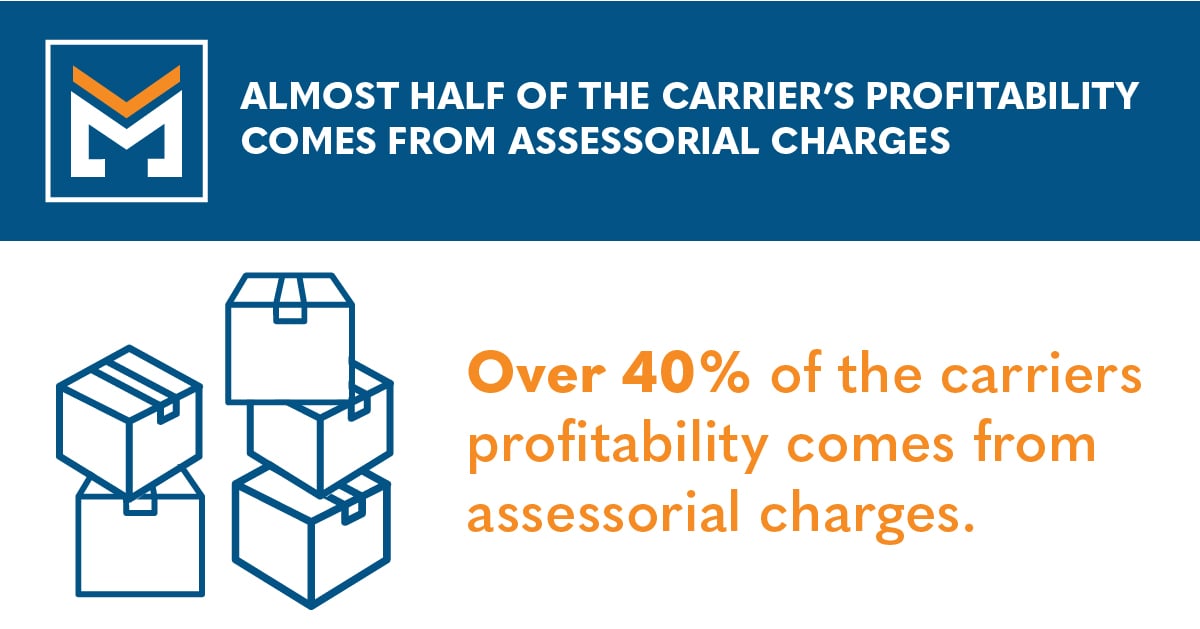
What Is a Good Freight Rate?
Similar to shipping parcels, figuring out what a good freight rate is can be difficult. There are industry indexes that can be used, but understanding and decoding this data can be time consuming and difficult. Freight rates are typically paid by the mile, and the range varies greatly. Truck load, less than truckload, air, and ocean freight have their own unique rates that will fluctuate based on market factors. Common variables that affect the freight rate include:
- Distance of travel - mileage is a large factor in determining freight rate, especially with the price of fuel continuing to rise. Detours due to construction, road closures, or accidents can affect profit margins.
- Weight of cargo - the overall weight of the cargo will impact how much fuel is used and the wear and tear on the vehicle.
- Shipment density - the amount of space allocated to your shipment will factor into the freight rate. To calculate the shipment density, the formula typically used is cargo weight by cubic feet.
- Freight classification - There are 18 classes of shipments that are put into different categories based on factors like ease of handling, value, weight, length, height, density, and liability.
What Is the Average Rate for Freight?
If you are searching for this answer, you won’t have much luck finding a specific number. This information is protected closely by freight contract carriers, for a reason. If businesses know an average number, then that gives more negotiating power to the purchaser. With ShipSigma, we empower you to optimize your entire supply chain process by leveraging historical shipping data, industry averages, and current costs.
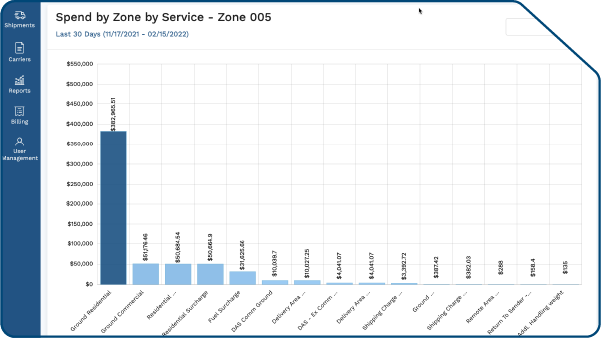
How Do You Negotiate a Contract?
Here at ShipSigma, we’ve seen many carrier contract negotiation examples. Long before this company existed, our founders were on the other side of the table negotiating contracts as employees of UPS and FedEx. Here are our top ten insights on how to negotiate contracts successfully:
Research and leverage data
The party with the most information also has the greatest negotiating power. Traditionally, contract carriers have had a stranglehold on information with confidentiality clauses and a lack of transparency. ShipSigma’s industry leading shipping insights and analytics software empowers you to negotiate by unpacking the truth of how much it actually costs to ship your parcels and freight.
Every company thinks they have negotiated the best rate, especially when they have successfully lowered their costs by 1% or less. And, in a way, you absolutely have. Closing a contract with a discount of this nature shows artful negotiation skills. However, analyzing shipping costs against competitors and finding a 1% discount significantly reinforces the illusion that their rates are low when the truth is that no one is getting the best deal. The duopoly between FedEx and UPS gives carriers the ultimate control.
ShipSigma’s end-to-end service gives you a passionate advocate who is intimately familiar with the internal processes of these major carriers, helping you reduce your margins and achieve significant cost savings.
Audit your invoices
Part of your research should include a parcel invoice audit, like those conducted by ShipSigma. Our platform will help you identify unnecessary costs and gain better visibility into your shipping habits. Using our self-managing system, you can go into negotiations equipped with every detail about late deliveries, inaccurate billing, lost or damaged packages, and other issues that crop up. When it comes to negotiation, knowledge truly is power.
Ask for what is market appropriate
You can’t ask for what is appropriate if you don’t have access to live market data. Our analysts & software engineers have developed industry leading tools that provide objective insights based on your carrier invoices. This detailed modeling allows you to compare vendors’ cost and capacity and enables you to ask for what is fair in your negotiation sessions.
Segment the negotiations
Negotiations can easily disintegrate when one of the parties takes an "all or nothing" approach. To avoid this attitude, one approach is to segment the contract into relevant portions and treat each one as its own negotiation. This will help you make progress with a series of solutions rather than attempting to come up with one major solution.
Take control of the negotiation process
A common denominator that we have observed is that our clients have great relationships with their contract carriers. This isn’t something we’re here to change. With a few tweaks, your relationship can stay positive while improving your outcome and bottom line. One way to do this is by controlling the negotiation process. Rather than waiting for your rep to come to you, you can (and should!) initiate negotiations and drive the location, timing, topics, and pace of negotiation.
Use facts, not feelings
Successful negotiators use statements of facts rather than appealing to emotion. Rather than using language like "I feel" or "I believe," they let their data and research do the negotiating for them—because objective facts are powerful.
Prioritize your objectives
Whenever you negotiate a contract, you will have a list of "must-haves'' and "nice-to-haves." Rates are clearly a high priority for most carrier contract negotiations, but there are other important aspects of these agreements as well. Take the time to go through your lists and select your top priorities. This will help you when negotiating because you already know where you have give and take.
Start High…and Give in strategically
Right in line with the above point, it is important to understand how to give a little bit to gain exponentially. Leave yourself room to negotiate by starting with a higher ask and be willing to let the other party "win" on small points—because you will ultimately walk out of the room with the grand prize.
Bring an inquisitiveness spirit
Whenever you reach an impasse during the negotiation process, questions can become a strategic and effective tool. Rather than demanding or arguing, asking questions about why the other party is taking a hard line can help facilitate discussion.
Enlist the help of professionals
Having lawyers review your contract is always a sound business decision. Along with the legal professionals, ShipSigma’s team of former UPS and FedEx staff can analyze your shipping profile and create a detailed and deliberate proposal to bring to your existing carrier. Our insider perspective paired with industry leading technology helps you improve on your already excellent contracts with the carrier you trust. 30 days from now, you will be saving 20 to 30% on every parcel that leaves your facility.
How Do You Negotiate With Shipping Companies?
The most important part of negotiating with your shipping company is to leverage your data and the relationship that you have already established. When looking at how to negotiate rates with carriers, it is important to recognize that your carrier does not want to lose your profitable business.
At ShipSigma, we are carrier-agnostic, and will help you achieve significant savings with your current shipping providers, no matter how recently the agreement was negotiated. Our cost modeling is based on your invoice data, and our proprietary technology provides predictive analytics that anticipate future shipping changes. This allows you to proactively interact with your carrier to ensure that you are getting the best possible pricing.
How do you negotiate a carrier rate?
You negotiate the best rates with the transparency and information provided by ShipSigma.
How do I get the best freight rates?
With ShipSigma’s experienced team leveraging proprietary technology and proven strategies.
Yes, we said it twice because we are passionate about saving our partners money. We know exactly where the savings are because we helped build the margins when we were working for these carriers. Our decades of carrier pricing, finance, and business development experience has given us firsthand knowledge of how these companies think and operate. The experience we have with setting and negotiating pricing on the carrier's side means that we know the acceptable profitability ratios and what the carrier will actually accept.
Measurable Savings On Every Package With ShipSigma
We’re not here to disrupt your operations or affect your relationship with the carriers. Our goal is to bring proven solutions and innovative technology that improves your bottom line AND makes carriers happy to keep you as a client.
With ShipSigma, you can bring cost modeling and profit margin insights to the negotiating table and walk away with a favorable contract based on what it actually costs to ship your parcels. This process can cut your negotiation time significantly, allowing you to secure significant improvements within 30-45 days. Our cost modeling algorithm provides unbiased and actionable information that would otherwise stay hidden within past invoices and agreements.
Try ShipSigma for free today and start saving on every parcel or load of freight that you ship.












